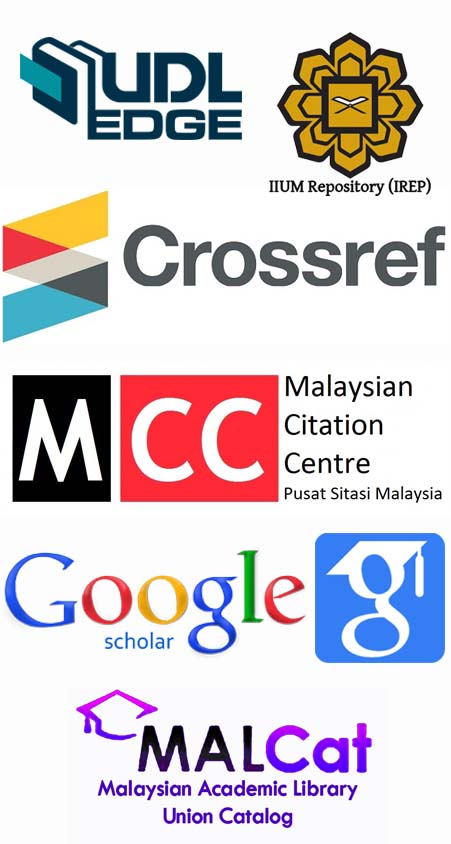A Critical Analysis of Bent-Rib Metaphor Ḥadīth: Embracing Women's Uniqueness and Empowerment
DOI:
https://doi.org/10.31436/alburhn.v7i2.317Abstract
The Bent-Rib Metaphor ḥadīth has long been a subject of interpretation and debate. This critical analysis explores the multifaceted dimensions of this ḥadīth, shedding light on its linguistic nuances and the broader implications for women's uniqueness and empowerment within the framework of Islam. The ḥadīth, which likens women to a bent rib, is often cited to justify traditional gender roles and hierarchies within Muslim societies. However, this study delves into the historical context, and original Arabic text, dissecting the intricacies of the metaphor and its intended message. It highlights the importance of contextual analysis in interpreting religious texts, challenging the simplistic readings that have often perpetuated patriarchal interpretations. Furthermore, this analysis emphasizes the need to recognize and celebrate the uniqueness of women within Islamic teachings. It argues that the Bent-Rib Metaphor ḥadīth can be interpreted as a symbol of diversity, complexity, and complementarity between genders, rather than justifying women's subordination. By promoting a more nuanced understanding of the ḥadīth, this study advocates for a broader role for women in religious, social, economic, and political spheres. The empowerment of women in Islamic societies is a central theme of this analysis, emphasizing that embracing the diversity and potential of women can lead to a more equitable and just society by Islamic principles. In conclusion, this critical examination of the Bent-Rib Metaphor ḥadīth offers a fresh perspective on women's roles and rights within Islam and serves as a foundation for fostering a more inclusive interpretation of Islamic teachings.
Downloads
References
Abou El Fadl, Khaled. (2001). Speaking in God’s Name: Islamic Law, Authority and Women. Oxford: Oneworld Publication
Abu Bakr Bin al-’Arābi al-Mālikī,. (n.d). Ᾱriḍat Al-Aḥwadhi bi Syarḥi Ṣaḥīḥ Al-Tirmīdhi. Beirut. :Dār Al-Kutub Al-ʿIlmiyyah.
Abu Daūd. Sulayman Bin al-Ashʿath Bin Isḥāq Bin Bashīr al-Azdī al-Sajistānī (2009). Al-Sunan. Shuʿayb al-Arnāʾūṭ (ed.). Damscus. : Dār al-Risālah alʿIlmiyyah.
Aḥmad Bin Ḥanbal. (n.d). Al-Musnad. Shuʿayb al-Arnāʾūṭ (ed.). Beirut. : Muʾassasah al-Risālah.
Al-Bukhāri, Muḥamad bin Ismā’īl Abῡ ’Abdillāh. (1979). Al-Jāmi’ Al-Ṣaḥīḥ. Muḥammad ’Abd al-Bāqi (ed.). Istanbul: al-Maktabah al-Islāmiyyah.
Al-Dārimī. ʿAbdullah Bin ʿAbd al-Raḥmān Bin al-Faḍl Bin ʿAbd al-Ṣamad. (2009). Al-Musnad al-Jāmiʿ. Nabīl Bin Hāshim Bin ʿAbdullah al-Ghumarī (ed.). Beirut. : Dār al-Bashāʾir al-Islāmiyyah
Al-Mubārak Fῡrī, Muḥammad ‘Abd al-Rahman bin ’Abd al-Raḥīm. (n.d). Tuḥfah al-Aḥwadhī Sharḥ Jāmi‘ Al-Tirmidhī
Al-Munāwī, Muḥammad ‘Abd al-Ra’ῡf. (2001) Fayḍ al-Qadīr Sharh Al-Jāmi’ Al-Ṣagīr. n.p: Dār al-Kutub al-’Ilmiyyah
Al-Qāḍi Iyādh, Iyādh Bin Mῡsā. (1998). Ikmāl al-Muʿallim bi Fawā’id Muslim. Egypt: Dār al-Wafāʾ.
Al-Ṣadīqī, Muḥammad Bin ’Alān. (n.d). Dalīl Al-Fāliḥīn li Ṭuruq Riyāḍ al-Ṣaliḥīn, (Beirut: Dar al-Kitab al-’arabī.
Al-Tirmīdhī, Muḥammad Bin ʿĪsā Bin Sūrah. (1996). Jāmi’ Al-Tirmidhi. Bashār ʿAwād Maʿrūf (ed.). n.p. :Dār Al-Gharb Al-Islāmī.
Ibn Ḥajar Al-‘Asqalānī, Aḥmad Ibn ‘Alī. (1978), Hadyu al-Sārī Muqaddimah Fatḥ al-Bārī. Cairo: Maktabah Kulliyyāt Azhariyyah.
Ibn Hubayrah. (n.d). Al-Ifsāḥ 'an Maʿānī al-Ṣiḥāḥ. Fuad ’Abd Al-Mun’im Ahmad (ed.). Riyadh: Dār al-Waṭan.
Ibn Mājah, Muḥammad Bin Yāzid al-Rubāʿī al-Qazwīnī. Al-Sunan. Muḥammad Fuʾad ʿAbd al-Bāqī (ed.). n.p. :Dār Iḥyāʾ al-Kutub al-ʿArabiyyah.
Ibn Taimiyyah, Aḥmad bin ’Abd Al-Ḥalīm Al-Harānī Abῡ al-’Abbās. (2005). Majmu’ Al-Fatāwa.
Keith L. Moore and Robert F. Dalley. (2005). Clinically Oriented Anatomy, (Philadelphia: Lippincott Williams & Wilkins, 4th edition).
Kaleem Jaweed. (2012). Progressive Launch Gay-Friendly, Women-Led Mosques in Attempt to Reform American Islam.
Muslim, Ibn al-Hajjāj Al-Qushayrī Al-Naysābūrī. (2006). Ṣaḥīḥ Muslim. Naẓr Bin Muḥammad Al-Firyābī Abū Qutaybah (ed.). Riyadh: Dār Tayyibah.
Simmons, Gwendolyn Zoharah. (2003). Are We up to the Challenge? The Need for a Radical Re-ordering of the Islamic Discourse on Women. In Omid Safi (ed.), Progressive Muslims (pp. 147-162). Oxford: One World Publication.
Yuksel, Edip. (2009). Violance and Peace. In Edip Yuksel (ed.), Critical Thinkers for Islamic Reform (pp. 221-231). Arizona: Brainbow Press.
Yuksel, Yahya. (2009). Being a Teen Named Yahya in America. In Edip Yuksel (ed.), Critical Thinkers for Islamic Reform (pp. 15-17). Arizona: Brainbow Press.
Zaqzuq, Mahmud Hamdi. (2002). Islam in the Era of Globalization. Cairo: Maktabah al-Shurūq.
Downloads
Published
How to Cite
Issue
Section
License
In general, reusing or reproducing substantial portions of al-Burhān content requires permission. This includes the use of text, figures, tables, multimedia content, and any other material published in any issues of al-Burhān Journal of Qur'an and Sunnah Studies. For some instances, al-Burhān may make its content freely viewable; however, such material may require permission for reuse. To seek permission, please contact the editorial.









